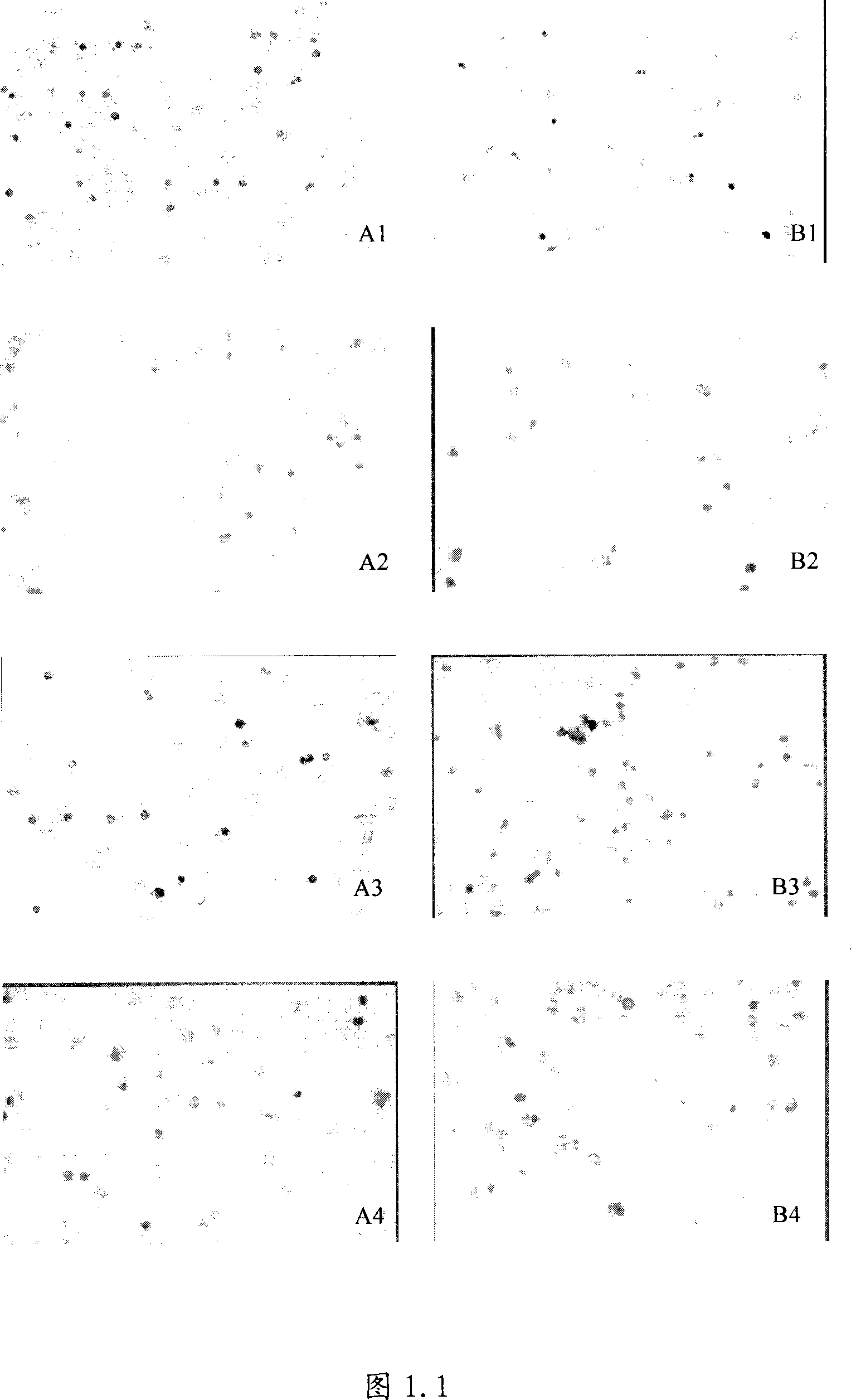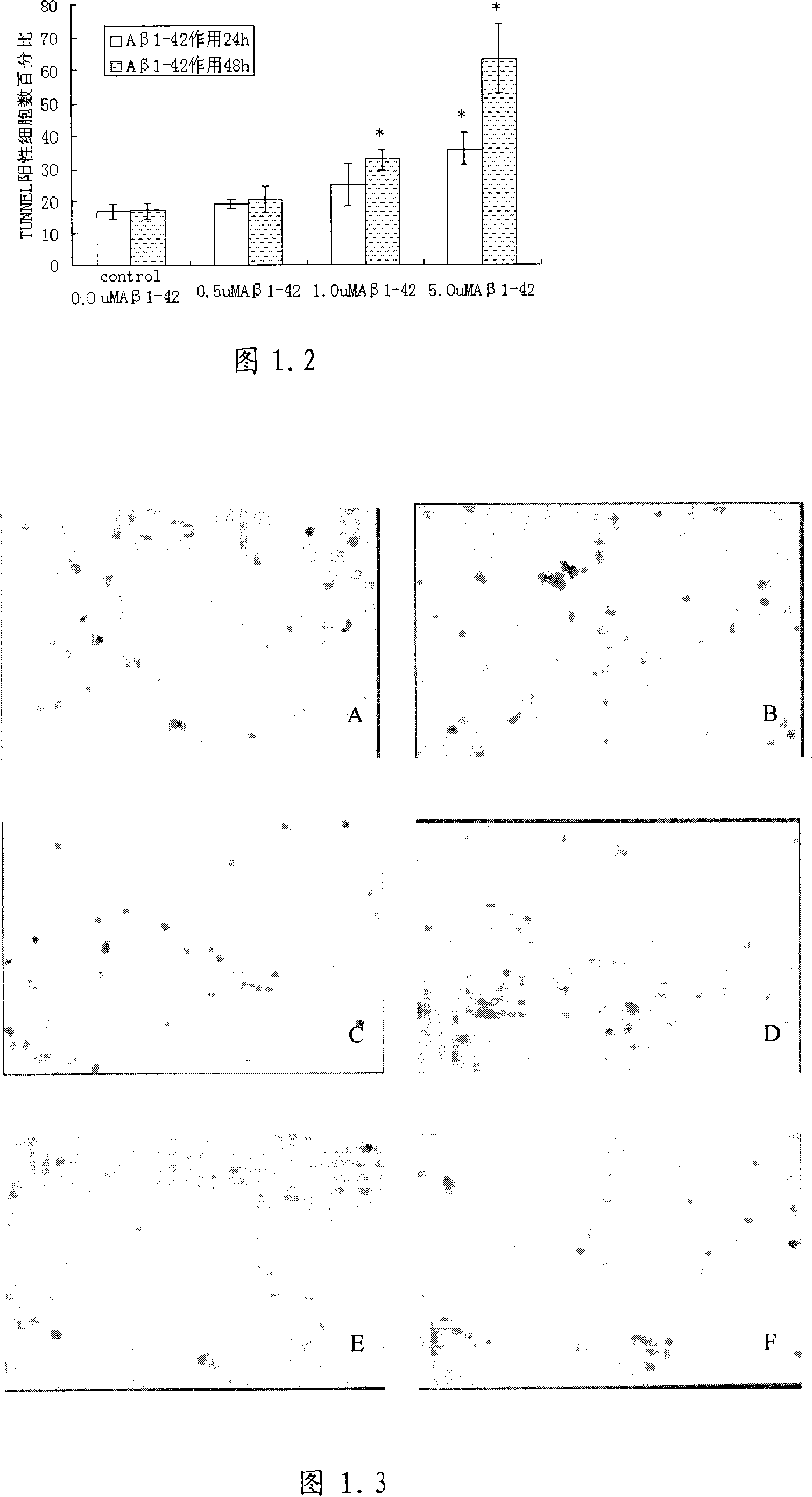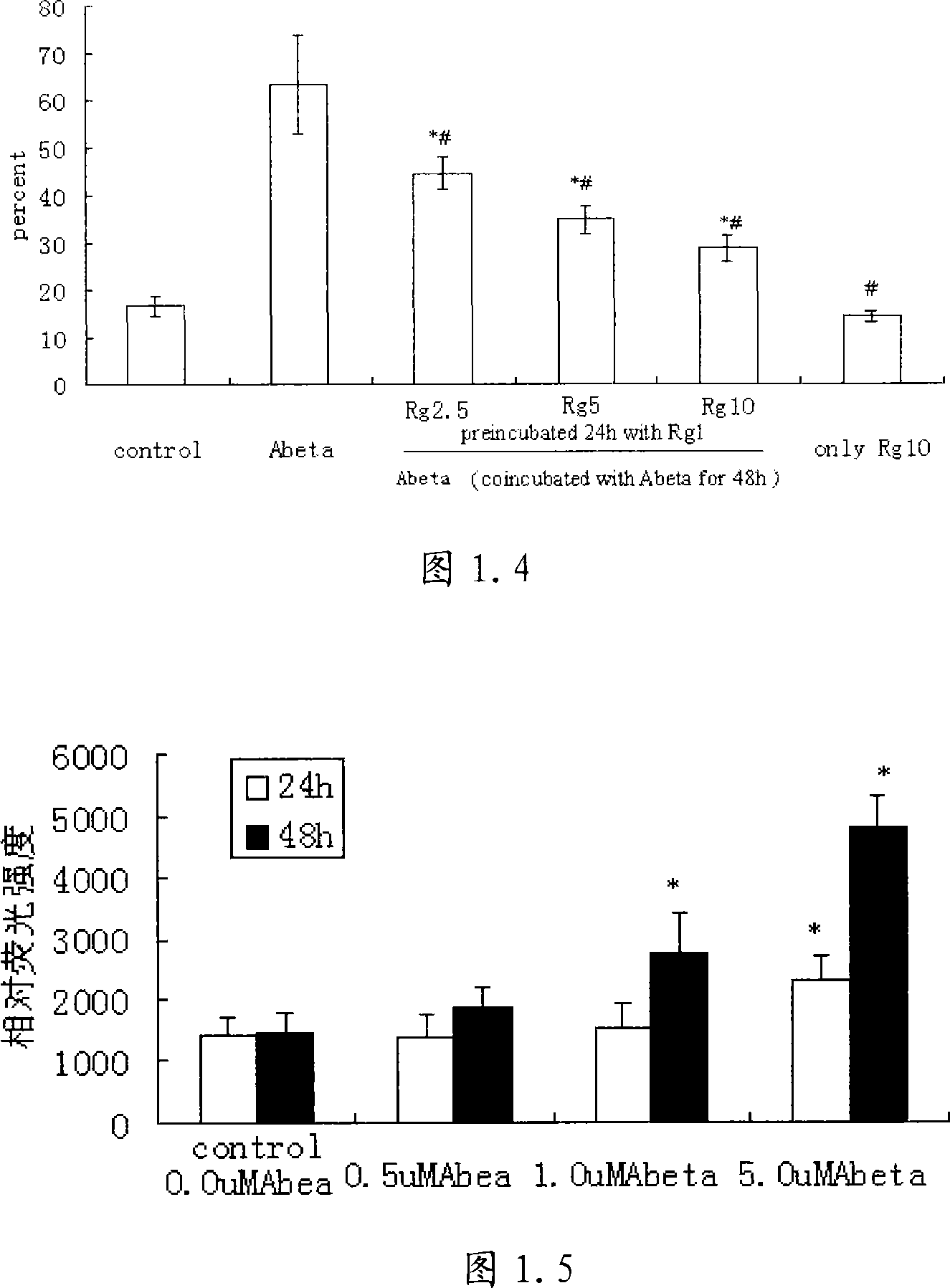New use of ginsenoside Rg1
A technology of ginsenosides and new uses, applied in the field of ginsenoside Rg1 treatment/prevention of Alzheimer's disease, can solve unclear problems, achieve strong scientific and innovative, reduce inhibition, high development and application value Effect
- Summary
- Abstract
- Description
- Claims
- Application Information
AI Technical Summary
Problems solved by technology
Method used
Image
Examples
Embodiment 1
[0041] Example 1 Ginsenoside Rg1 alleviates oligomeric Aβ 1-42 Induced apoptosis of cortical neurons
[0042] 1. TUNNEL staining
[0043] (1) Cells were seeded on coverslips, treated with ginsenoside Rg1 and / or oligomeric Aβ 1-42 After the intervention, aspirate the medium and rinse carefully with 1xPBS.
[0044] (2) Fix with 3.7% formaldehyde at 18°C-24°C for 10min.
[0045] (3) After discarding the formaldehyde, fix with 100% ethanol for 20 min, and wash with 1xPBS.
[0046] (4) After soaking the sample in 1xPBS at 18°C-24°C for 10min, carefully suck up and discard the surrounding water.
[0047] (5) Add 50 μL of neuron punching agent (Neuropore) liquid to fully contact the cells, and act for 15min-30min in a humid chamber at 18°C-24°C.
[0048] (6) Rinse twice with DNase-free water, 2 minutes each time.
[0049] (7) Drop inactivator [containing 3% H 2 o 2 Methanol] at 18°C-24°C for 5 minutes, then wash once with 1xPBS at 18°C-24°C for about 2 minutes.
[0050] (8) ...
Embodiment 2
[0078] Example 2 Ginsenoside Rg1 alleviates oligomeric Aβ 1-42 Stress damage to neurons
[0079] 1. Determination of the level of reactive oxygen species (ROS) by fluorescence method
[0080] The cells of each group treated with different conditions were digested with 0.25% trypsin, carefully washed with sterile PBS, and then counted. Take the same number of cells, directly add 1M 2,7-dichlorofluorescein diester (DCFH-DA) solution, adjust the final concentration to 10uM, and let it stand in a 5% CO2 incubator at 37°C for 0.5h. After carefully washing with sterile PBS for 3 times, use a fluorescence spectrophotometer to select an excitation wavelength of 480nm and an emission wavelength of 530nm to measure the fluorescence intensity, and set a blank control tube at the same time.
[0081] 1.1 Oligomeric Aβ 1-42 Induced increased levels of ROS in cortical neurons
[0082] 5 μM oligomeric Aβ 1-42 After acting on primary cultured mouse cortical neurons, observe the level of i...
Embodiment 3
[0110] Example 3 Ginsenoside Rg1 alleviates oligomeric Aβ 1-42 Induced mitochondrial damage in cortical neurons
[0111] 1. Determination of Mitochondrial Membrane Potential Levels by Fluorescence
[0112] The cells of each group treated with different conditions were digested with 0.25% trypsin, carefully washed with sterile HBSS (Hank s'balanced saltsolution) and counted. Take the same number of cells, directly add 1xJC-1 and incubate in an incubator at 37°C for 15 minutes, wash with HBSS three times, add an equal volume of assay buffer and mix gently, and detect the fluorescence intensity on the machine (exλ488nm, emλ525nm; exλ530nm, emλ590nm ). The resulting fluorescence intensity ratio reflects the potential difference between the inner and outer membranes of mitochondria: red fluorescence intensity (exλ530nm, emλ590nm) / green fluorescence intensity (exλ488nm, emλ525nm).
[0113] 1.1 Oligomeric Aβ 1-42 Disruption of mitochondrial membrane potential in cortical neurons ...
PUM
 Login to View More
Login to View More Abstract
Description
Claims
Application Information
 Login to View More
Login to View More - R&D
- Intellectual Property
- Life Sciences
- Materials
- Tech Scout
- Unparalleled Data Quality
- Higher Quality Content
- 60% Fewer Hallucinations
Browse by: Latest US Patents, China's latest patents, Technical Efficacy Thesaurus, Application Domain, Technology Topic, Popular Technical Reports.
© 2025 PatSnap. All rights reserved.Legal|Privacy policy|Modern Slavery Act Transparency Statement|Sitemap|About US| Contact US: help@patsnap.com



